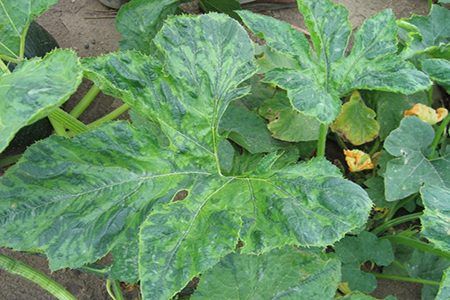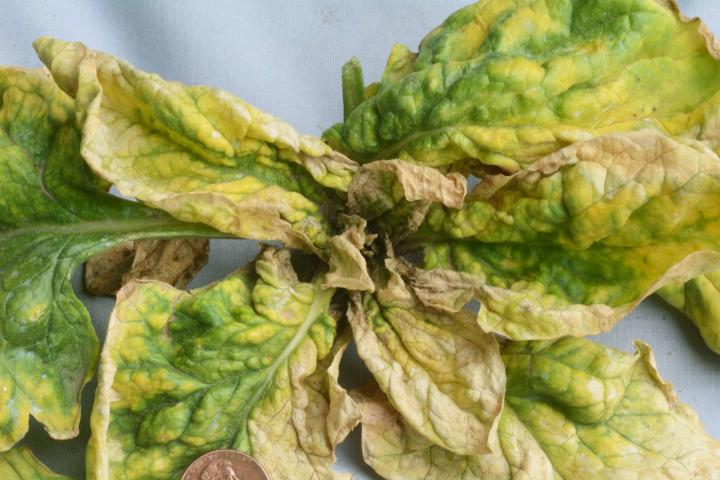
IDENTIFYING, CONTROLLING AND PREVENTING MOSAIC VIRUSES
What Are Mosaic Viruses?
This virus infects more than 150 types of plants, including many fruits, vegetables, and flowers. It is characterized by leaves mottled with yellow, white, and light and dark green spots or streaks. Some of the most commonly infected plants include tomatoes, squashes, cauliflower, and cucumbers.
Cucumber mosaic virus is one of the most common types of mosaic viruses, and it is usually spread by aphids. As can be inferred from its name, cucumber mosaic virus often affects cucumbers, but it is also a common problem for tomatoes, melons, squashes, and other plants.
Tobacco mosaic virus spreads through seeds and direct contact, and the best way to avoid it is to grow resistant varieties.
Identification
How to Identify Mosaic Viruses and Damage
Viral diseases are difficult to identify because symptoms vary from plant to plant and may also vary depending on the age of the plant and its growing conditions. However, the most common ways of identifying mosaic viruses are listed below.
- The leaves are mottled with yellow, white, and light and dark green spots, which appear to be elevated. This gives the leaves a blister-like appearance.
- Plants are often stunted, or they grow poorly.
- Plants may have other deformities and their leaves may be crinkled or wavy.
- Cucumber mosaic virus: Infected plants are stunted and often exhibit “shoestring sydrome,” which is a characteristic malformation in which the edges of the leaves fail to develop, with the leaf veins developing as long, narrow strips. Tomatoes are small and misshapen.
- Tobacco mosaic virus: Infected plants have mottled and yellowed leaves and twisted or deformed young growth.

Photo Credit: University of California. Cucumber mosaic virus causes severe damage and discoloration to a spinach plant.
Control and Prevention
How to Control Mosaic Viruses
Once plants are infected, there are no controls. Remove all the infected plants and destroy them. Also, be sure to disinfect your gardening tools.
Prevent Mosaic Viruses
- Plant resistant plants when available in your garden. Resistant varieties of tomatoes have yet to be developed for cucumber mosaic virus, but tomatoes that are resistant to tobacco mosaic virus may have some slight resistance to cucumber mosaic virus as well.
- Mosaic viruses are mostly spread by insects, especially aphids and leafhoppers. You can try covering your plants with a floating row cover or aluminum foil mulches to prevent these insects from infecting your plants. Look at our other tips for controlling aphids.
- Control your weeds. Some types may serve as hosts for the disease.
- To avoid tobacco mosaic virus, soak seeds in a 10 percent bleach solution before planting and avoid handling tobacco near plants.
Plants Affected
- Tomatoes
- Cucumbers
- Cauliflower
- Squash and Zucchini